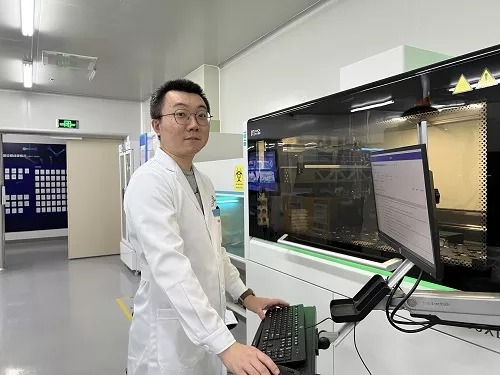Recently, Shen Yue, a researcher at Shenzhen Huada Institute of life sciences, and his team and collaborators published a cover article on Natural Computing Science, which provided a high-density and stable bit base encoding and decoding method for the application of DNA information storage, and completed the experimental verification of information storage in vivo and in vitro.
As one of the main directions of the integration of biotechnology and information technology, DNA storage has attracted extensive attention in recent years. The encoding and decoding of DNA storage, that is, the conversion between bits and bases, is one of the most important links in DNA storage. It not only determines the efficiency of information conversion (information density), but also directly affects the stability and reliable recovery of stored information. Since 2012, the development of codec technology has mainly focused on improving information density, while the consideration of technical compatibility and stable recovery of original information is not comprehensive. Before 2017, the encoding and decoding technologies failed to achieve complete technical compatibility, and the GC content of the generated sequence largely depends on the 0 / 1 Distribution of the original data. In 2017, the DNA fountain code developed by the research team of Columbia University almost solved this problem, but the directly applied channel coding technology has strong data type preference, so there is a high risk of data irrecoverability in practical storage applications.

Photo provided by Shen Yue in the research team of the laboratory**
Shen Yue, the corresponding author of the paper, told China Science Daily that in order to solve this problem, they skillfully applied the inspiration from the DNA double strand model to the DNA encoding and decoding system by combining the thought of the unity of opposites of "Yin and Yang" in Chinese culture. With two different sets of rules, they respectively "one-to-one" compiled and converted the two binary information, and then took the part of the unified intersection of the two as the final solution, Realize the combination of two independent information into a string of DNA sequence; On the other hand, by introducing the screening mechanism, they will filter the sequences with poor compatibility with the existing synthetic sequencing technology through the preset screening conditions. According to different combination methods, the system can provide 1536 different combinations of coding rules, which greatly expands the scope of its application scenarios.
Through the theoretical derivation of coding and the simulation coding of files of different data types, the researchers also proved that the system can significantly improve the stability of data recovery on the premise of ensuring the information density (the average recovery rate of stored data is nearly two orders of magnitude higher than that of DNA fountain code).

Plain quality in the laboratory provided by the research team**
Ping Zhi, co-author of the paper and assistant researcher of Shenzhen Huada Institute of life sciences, told reporters that DNA information storage with cells has also received great attention in recent years. Therefore, they also tested the data recovery stability of the system after storage and passage in yeast cells. The results show that the information of yeast strain as carrier can still be completely restored after more than 1000 generations. This storage method is close to the theoretical limit of physical information density of natural DNA molecules, and the amount of information stored per gram of DNA is about 432.2eb.
This research has developed a new DNA storage coding method and proposed 1536 different coding rule combinations, which provides an important tool for the multi type application of DNA storage and is expected to play a positive role in the research of new media for long-term storage of massive data.
Relevant paper information:
https://doi.org/10.1038/s43588-022-00231-2
https://doi.org/10.1038/s43588-022-00235-y